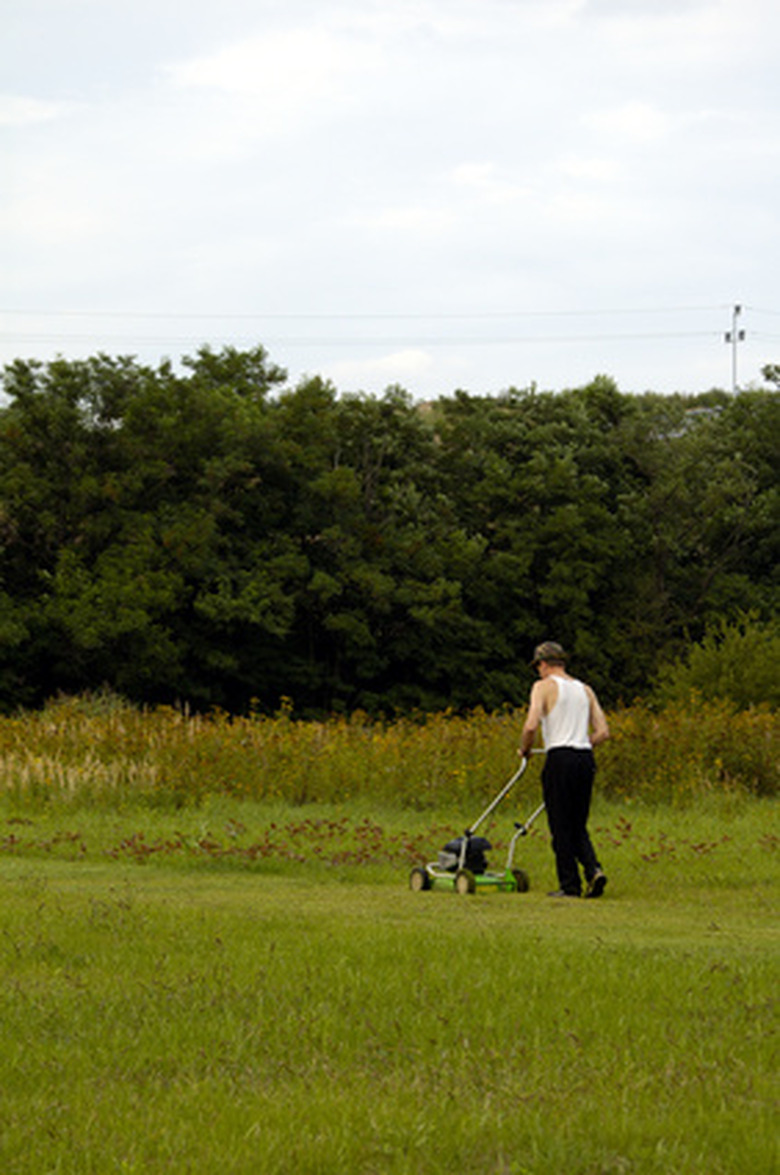How To Adjust The Idle On A Briggs & Stratton Lawn Mower
Things Needed
-
Flathead screwdriver
-
Tachometer
Briggs & Stratton manufactures a variety of small engines for use in lawn equipment, including lawn mowers, roto-tillers, pressure washers and other items. A Briggs & Stratton lawn mower engine uses a carburetor to mix the gasoline and air that is pulled into the cylinder for propulsion. These carburetors typically have two adjustment screws, one for the idle adjustment and the other for fine-tuning the engine's performance at full throttle.
Step 1
Loosen the set screw in the center of the air filter with a flathead screwdriver. Remove the air filter, air cartridge and set screw.
Step 2
Tighten the idle adjustment screw, found on the side of the carburetor, by turning it clockwise just to the point where you feel it lightly touching the seat of the carburetor. Back the screw off (turn counterclockwise) from this point one-and-a-half turns.
Step 3
Turn the main adjustment screw on the bottom of the float bowl clockwise until the point where you feel it touch the seat of the carburetor. Back the main adjustment screw (counterclockwise) one-and-a-half turns.
Step 4
Replace the air filter and air cartridge on the carburetor and tighten the set screw clockwise to lock in place.
Step 5
Start the engine, set it to half-throttle and allow it to warm up for about five minutes.
Step 6
Turn the idle adjustment screw slowly in a clockwise manner until the engine's RPMs begin to slow. Remember this position, and turn the screw counterclockwise past the original point, listening for the engine to begin slowing again. Notice this point and turn the screw clockwise to the mid-point between the two spots where the engine began to slow.
Step 7
Check the engine idle speed with a tachometer. For aluminum-block engines, the engine should idle at 1750 RPM. On cast-iron block engines, the idle speed should be 1200 RPM. Adjust the idle adjustment screw slightly to fine-tune the engine to this optimum idle speed.
